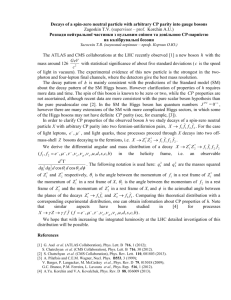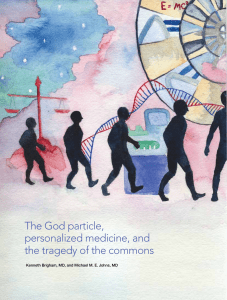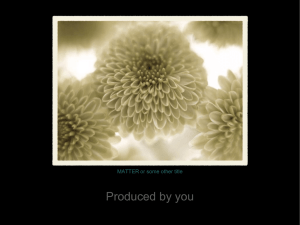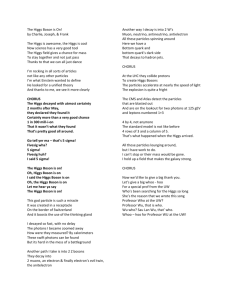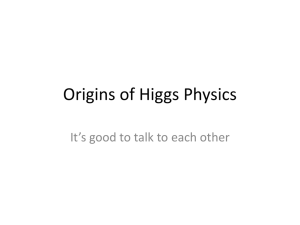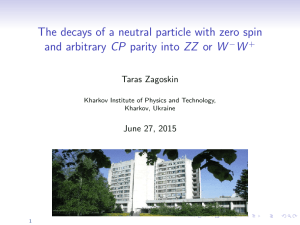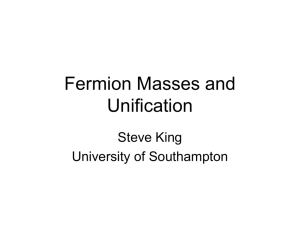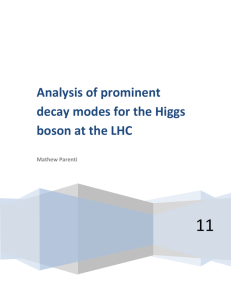Teachers Notes - Colliding Particles
advertisement
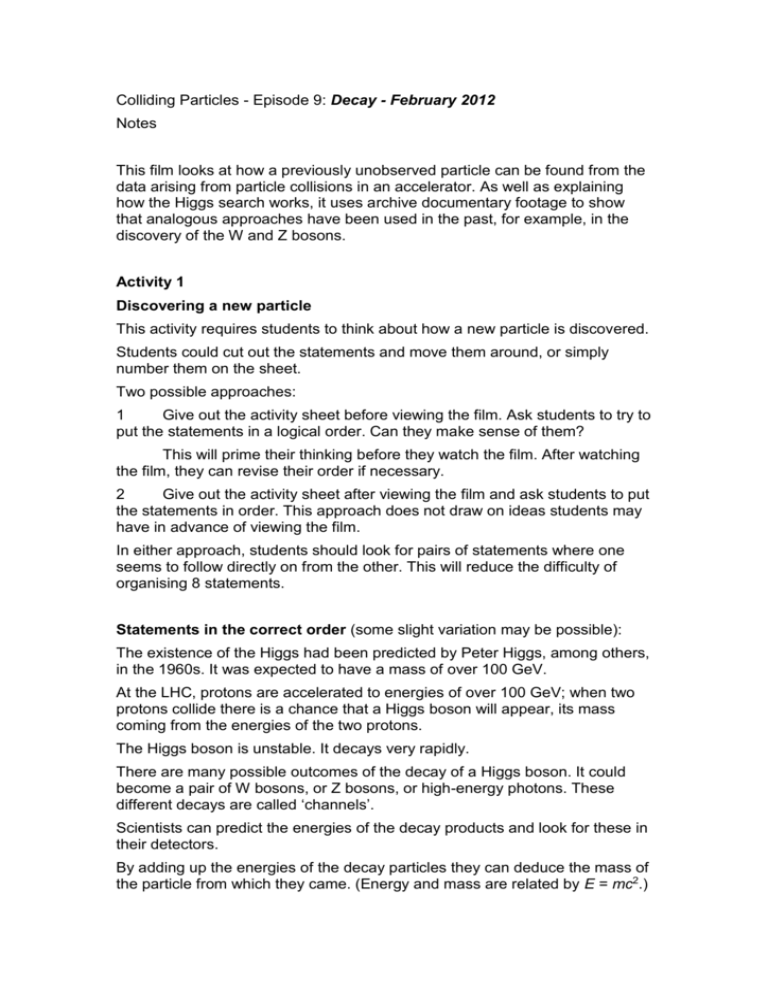
Colliding Particles - Episode 9: Decay - February 2012 Notes This film looks at how a previously unobserved particle can be found from the data arising from particle collisions in an accelerator. As well as explaining how the Higgs search works, it uses archive documentary footage to show that analogous approaches have been used in the past, for example, in the discovery of the W and Z bosons. Activity 1 Discovering a new particle This activity requires students to think about how a new particle is discovered. Students could cut out the statements and move them around, or simply number them on the sheet. Two possible approaches: 1 Give out the activity sheet before viewing the film. Ask students to try to put the statements in a logical order. Can they make sense of them? This will prime their thinking before they watch the film. After watching the film, they can revise their order if necessary. 2 Give out the activity sheet after viewing the film and ask students to put the statements in order. This approach does not draw on ideas students may have in advance of viewing the film. In either approach, students should look for pairs of statements where one seems to follow directly on from the other. This will reduce the difficulty of organising 8 statements. Statements in the correct order (some slight variation may be possible): The existence of the Higgs had been predicted by Peter Higgs, among others, in the 1960s. It was expected to have a mass of over 100 GeV. At the LHC, protons are accelerated to energies of over 100 GeV; when two protons collide there is a chance that a Higgs boson will appear, its mass coming from the energies of the two protons. The Higgs boson is unstable. It decays very rapidly. There are many possible outcomes of the decay of a Higgs boson. It could become a pair of W bosons, or Z bosons, or high-energy photons. These different decays are called ‘channels’. Scientists can predict the energies of the decay products and look for these in their detectors. By adding up the energies of the decay particles they can deduce the mass of the particle from which they came. (Energy and mass are related by E = mc2.) Each channel can contribute data to the final answer. The various results must be combined statistically, taking account of the uncertainties in the data. Combining the data from different channels helps to increase the sensitivity of the experiment, but it is ‘awfully difficult’. Showing the film The film is available in 2 versions from the website: the original version, and a special ‘Classroom Edit’, which break the films into themed sections with spaces in between for easy pausing. The original version of the film can be shown straight through and uninterrupted. This will allow students to start recognising the different personalities involved. Subsequently, the ‘Classroom edit’ can be shown in sections (see Summary below), with a discussion of the main points arising after each section. Classroom Edit Summary Jon Butterworth, experimental physicist, University College London Adam Davison, research student, University College London Ricardo Goncalo, Royal Holloway University 0:00 February 2012 Jon explains that the hunt for the Higgs boson at the LHC has progressed in a series of small, incremental steps – ‘like all science’. 0:20 CERN’s past Documentary footage of CERN, narrated by Raymond Baxter, from 19XX. Accelerators and the hunt for subatomic particles explained by YYYYY from 19XX. 0:45 The answer is coming XXXXX explains that the LHC experiments will arrive at an answer within the year. YYYYY explains the history of the idea of the atom. 1:20 Products of decay Adam and XXXXX explain that the Higgs will be found from its decay products. Find the decay products, add up their energies, and deduce the mass of the Higgs. There are several possible decays (‘channels’) so any or all could give the answer. 1:50 Particle decay An analogy is drawn with the discoveries of the W and Z bosons. 2:10 Possible decays Adam and XXXXX show some of the possible decays and their probabilities. 3:40 Adding up XXXXX explains that the results from the different channels must be combined statistically to maximise the sensitivity of the experiment – but this is ‘awfully complicated’. 4:45 END

